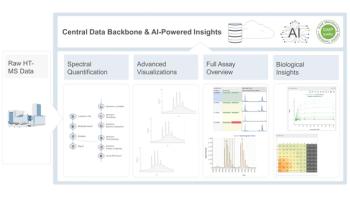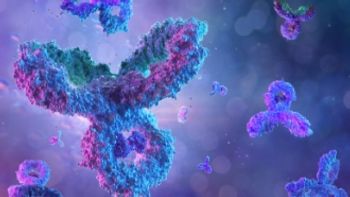
Best of the Week: Lab Innovations Conference, CKD Metabolic Assessments, Tire Rubber Analysis
Here is some of the most popular content posted on LCGC International this week.
This week, LCGC International published a variety of articles on the hottest topics in chromatography. Below, we’ve highlighted some of the most popular articles, according to our readers. Happy reading!
LCGC Staff
The Lab Innovations 2024 conference is scheduled to take place at the NEC in Birmingham, United Kingdom (UK), from October 30–31, 2024. This event is the UK's largest annual exhibition dedicated to the laboratory industry, bringing together over 4,000 professionals from various sectors such as life sciences, pharmaceuticals, academia, and healthcare. Along with over 4,000 attendees, more than 200 suppliers will be in attendance. Some of the leading suppliers expected to be in attendance include Waters, Sartorius, IKA, Bronkhurst UK, and Veolia Water Technologies, along many others.
John Chasse
Chronic kidney disease (CKD) is a prevalent condition in the general population, and it has become a significant global public health concern. In the early stages of the disease, the symptoms may not be obvious, and therefore can be easily overlooked. The progression of CKD towards end-stage renal disease (ESRD), however, is unfortunately associated with high costs, mortality, and a significant decline in a patient’s quality of life, particularly when dialysis treatment is introduced. The plasma biochemical marker of glomerular filtration rate (GFR), plasma creatinine concentration (sCr), though widely used, is often considered insensitive for detecting early stages of CKD. Therefore, the early recognition of CKD is crucial in slowing down disease progression, reducing morbidity, and improving survival. In a recent study published in the Journal of Inflammation Research, plasma samples from 47 patients with stages 1–4 chronic kidney disease (CKD) not requiring dialysis (as well as 30 healthy controls) were analyzed with liquid chromatography-mass spectrometry (LC-MS) to investigate the changes of different metabolites in the body fluids of non-dialysis patients with CKD using a metabolomics approach.
John Chasse
Approximately one billion tires reach the end of their useful lives globally every year. End-of-life tires (ELTs) are often recycled into crumb rubber that is subsequently repurposed into building materials, shoe soles, gym mats, or thrown away in landfills. Crumb rubber generated from ELTs poses a threat to environmental and human health based on its widespread use. Of particular concern is the use of ELT crumb rubber as infill for artificial turf fields, due to people being unknowingly exposed to complex mixtures of chemicals while on these fields. A recent joint study by scientists from Northeastern University (Boston, Massachusetts) and the University of Washington, published in Environmental Science: Processes & Impacts, involved using a multi-faceted approach consisting of targeted quantitation, chemical profiling, and suspect screening via ultra-high performance liquid chromatography-high-resolution mass spectrometry (UHPLC-HRMS).
Aaron Acevedo
Doping with endogenous steroids, such as testosterone (T), while highly prevalent, can be challenging to uncover. This is because such hormones are produced naturally, and alternations in urinary concentrations can also be due to medical conditions. To prove the exogenous origins of these steroids, the carbon isotope ratio (CIR) of the steroid(s) of interest in urine are often compared with the CIRs of endogenous reference compounds (ERC), or substances developed within an organism, in the suspect sample. In a recent study led by scientists from Lausanne University Hospital in Geneva, Switzerland, ultrahigh-performance supercritical fluid chromatography hyphenated to tandem mass spectrometry (UHPSFC–MS/MS) was tested as an analysis method for detecting urinary endogenous steroids.
Aaron Acevedo
The respiratory mucosa is a mucous membrane lining the respiratory tract, including the nasal cavity, the larynx, the trachea, and the bronchi tree. The inhalation route is of increasing interest for local and systemic drug delivery, including macromolecular biopharmaceuticals like peptides, proteins, and gene therapeutics. In the initial phases of drug development, evaluating physicochemical properties of drug candidates extends beyond biological activity assessment. Lipophilicity and solubility are also essential parameters that play roles in the absorption of drugs administered via parenteral and enteral routes, including the pulmonary route. Because of this, there is a need for reliable, reproducible, and high-throughput screening methods to characterize these parameters. In this study, scientists from Edinburgh Napier University in Edinburgh, UK and the University of Helsinki in Finland compared immobilized artificial membrane liquid chromatography (IAM LC) and liposome electrokinetic capillary chromatography (LEKC) for their effectiveness in assessing drug passage through respiratory mucosa.
Newsletter
Join the global community of analytical scientists who trust LCGC for insights on the latest techniques, trends, and expert solutions in chromatography.





